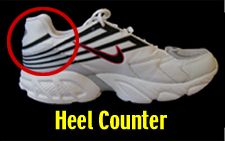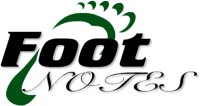
What makes a good running/walking shoe?
How many times have you had a patient claim they have “really good shoes” usually due to the fact that they were expensive or the brand is considered high end from a fashion stance? I’m only 8 months out of university and have lost count all ready!
Outside of a work environment I have no shame in backing myself as a male fashion admirer, so I completely understand patient desires to conform to the norms of the social world as opposed to sporting the Jerry Seinfeld Jeakers.
But for today let’s keep it professional and relatively evidence based.
Most runners should realistically be changed every twelve months despite what they appear to be on the outside, it’s unfortunate but many weekend warriors will not be aware of their need for new shoes until they begin to get niggles or injury. The midsole of majority of traditional runners are capable of clocking up anywhere between 800-1000km depending on how often you wear them, the surfaces covered and your running style. Let’s have a look at the features which essentially make up what would be considered a good running shoe.
- Firm Heel Counter
The heel counter is the cupped rear of the shoe’s chassis designed to hold the heel of the foot in place when the shoes are laced correctly. It is a growing trend in the technology and design features of shoes for females to have a more narrow heel and wider forefoot to compensate for anatomical differences. In some cases where the heel counter is not stiff enough to keep the rear foot stable the chance of ankle inversion sprains, blistering and Achilles tendon injuries have the potential to increase in an unaware athlete.
 2. Midsole
2. Midsole
The mid sole of a traditional shoe is meant to be stiff to act as a lever of propulsion when the toes bend to toe off into the flight or single stance phase of running or walking respectively. This shank technology in the shoe is most often the part which breaks down the fastest but is also not obvious to the naked eye when it begins to occur.
When the midsole flexibility begins to increase, much of the shoes support systems also begin to be less effective this has the potential to lead to plantar surfaces of the foot to be placed under further pressure and the extrinsic muscles of the foot to be overloaded as the attempt to support the foot in a stable position through midstance and propulsion.

3.Outer Sole
The outer sole is the most visible support and cushioning system of the shoe, often coloured differently dependant on the uni/dual/tri density materials used a support system. These attributes can also contribute to the pitch of the shoe which will be further discussed in the upcoming article which looks at the theory of types of footwear currently available.
The combination of varying densities can lead to an uneven breakdown period which can cause undue pressure in areas which do not require the need for structure and therefore result in pedal postural changes and irritation of anatomical organisations.
 4.Fore foot
4.Fore foot
The fore foot of the shoe should be able to flex in a upward direction at the MTPJs or what many of my patients tend to call the “knuckles” of the foot. The width of the shoe should not be able to be compressed and side to side, rotational or downward flexibility should be approached with caution as this once again can lead to overloading injuries or injuries which can be associated with body awareness or shoe awareness such as ankle inversion sprains.

The shoe features discussed above are relatable to what is known as a traditional shoe. In the coming blogs FootNotes takes a more in-depth and evidence based look at barefoot, minimalist, traditional and maximalist shoes to put in context the variants of these popular personal choices.
Jackson McCosker
Director /Chief Editor

1 thought on “What to Look For in a Running/Walking Shoe?”